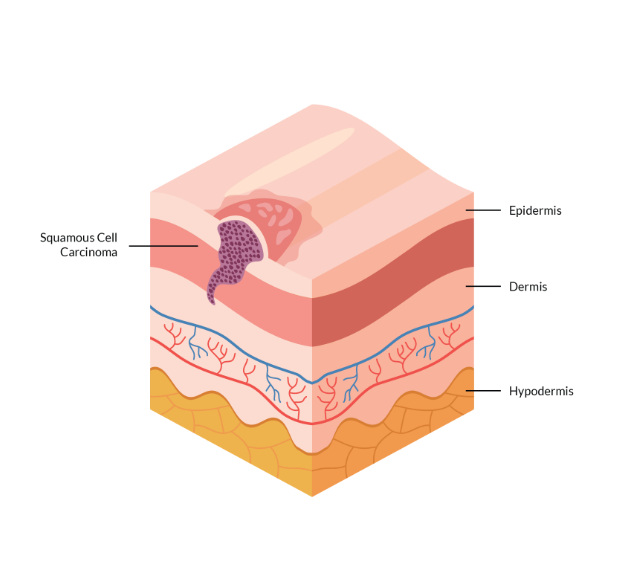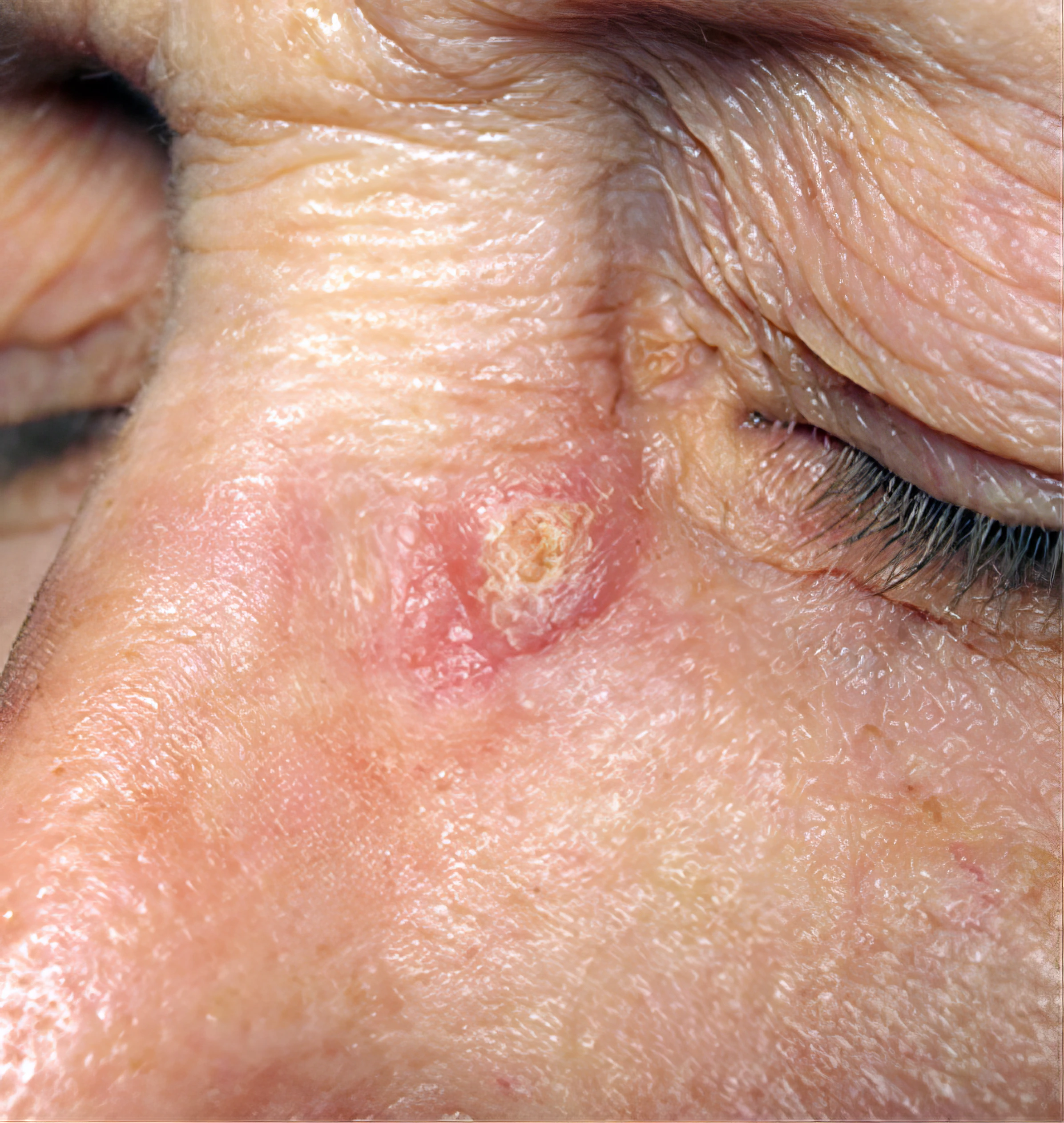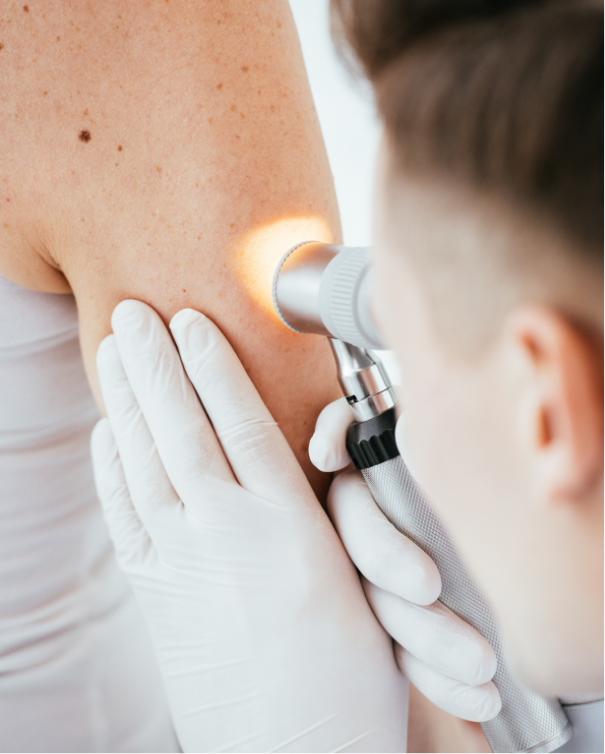A rough, scaly patch of skin that may become crusted or bleed
A red, firm bump or growth
An open sore that doesn’t heal or heals and then returns
A wart‑like growth
A sore or growth developing within an old scar, burn, or chronic skin injury
Squamous cell carcinoma is the second most common type of non-melanoma skin cancer. It can grow quickly and spread to other parts of the body if left untreated.

Squamous cell carcinoma (SCC) develops in the squamous cells that make up the middle and outer layers of the skin. Often caused by long-term sun exposure, it may appear as a rough or scaly patch, a red bump, or a sore that doesn’t heal. Squamous cell carcinoma has a greater tendency to grow, which makes early detection and treatment critical.
A rough, scaly patch of skin that may become crusted or bleed
A red, firm bump or growth
An open sore that doesn’t heal or heals and then returns
A wart‑like growth
A sore or growth developing within an old scar, burn, or chronic skin injury
Most squamous cell carcinomas are caused by UV damage to the skin from years of sun exposure or tanning bed use. Other contributors can include:
Having fair skin, light eyes, and light hair
A weakened immune system
Chronic skin inflammation or injuries
Exposure to certain chemicals or radiation
A history of precancerous growths, such as actinic keratoses


A thorough skin exam by a healthcare provider will help identify anything suspicious on your skin and give you a chance to discuss any changes you’ve noticed. If SCC is suspected, your healthcare provider may perform a shave biopsy to remove a small tissue sample for analysis under a microscope. This can confirm the diagnosis and help inform the best treatment approach.
Treatment for SCC depends on its size, depth, location, and whether it has spread. With treatment, most people diagnosed with squamous cell carcinomas have a very good prognosis, but early detection is key. Treatment options include:
Excisional Surgery or Mohs: Removal of the cancerous lump or lesion with a scalpel along with a margin of healthy skin.
Radiant Aura: A precise, non‑surgical treatment that uses targeted low‑energy radiation to destroy SCC cells — ideal for patients seeking a scar‑free option or for areas where surgery may be difficult.
Squamous cell carcinoma is the second most common type of skin cancer. It develops in the squamous cells of the skin and often looks like a scaly patch, red bump, or sore that doesn’t heal. Unlike basal cell carcinoma, SCC can grow quickly and may spread if untreated.
SCC can appear in different ways. Common signs include rough, scaly patches that may bleed, firm red bumps, open sores that don’t heal, wart-like growths, or sores that develop in old scars or injuries.
Treatment depends on how deep or advanced the cancer is. Options include surgical removal, Mohs surgery, or non-surgical therapies like targeted low-energy radiation like Radiant Aura. Our team can recommend the best option based on the size, location, and stage of the cancer.
Risk is higher for people with fair skin, a history of long-term sun exposure, tanning bed use, or frequent sunburns. A weakened immune system, chronic skin injuries, and precancerous growths like actinic keratoses can also increase your risk.
Yes, SCC can reoccur, either in the same area or elsewhere on the skin. Regular follow-up exams and protecting your skin from sun exposure are important to lower the risk of reoccurrence.